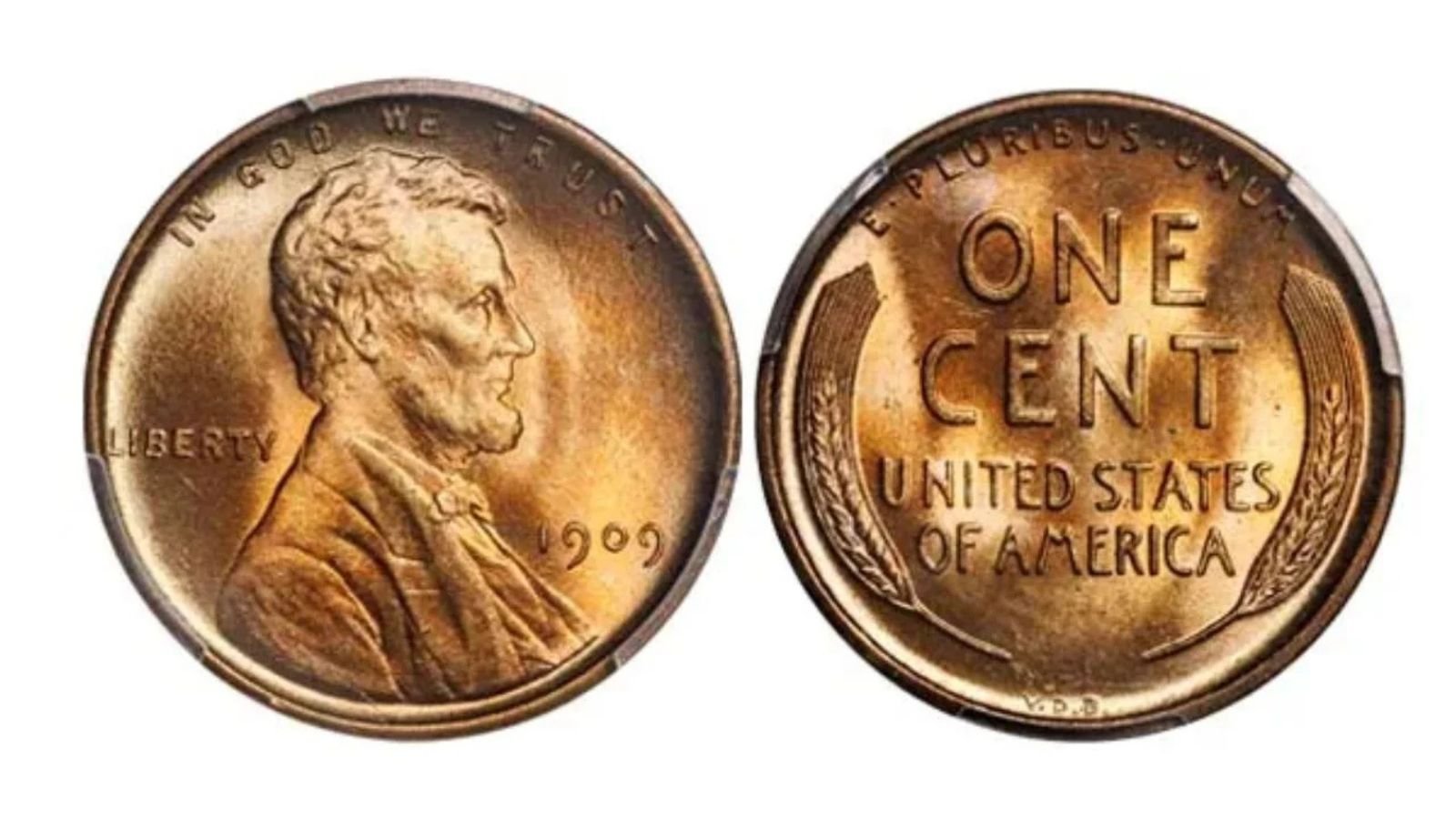When you peer into your change jar, the coins that rattle around most often go unnoticed. Yet nestled among those ordinary copper discs might be a numismatic marvel—especially if it’s a Lincoln Wheat Penny. This modest coin, struck between 1909 and 1958, has become a symbol of possibility for collectors and everyday change-searchers alike. Believe it or not, a rare version of that humble penny has helped someone win nearly $200,000 at auction. Let’s explore how a copper coin that once cost a cent turned into a potential fortune.
The Lincoln Wheat Penny Valued at $204,000
One legendary Lincoln Wheat Penny emerged in the spotlight in 2019, when a 1943 penny made of bronze sold for $204,000. That’s nearly half a million times its face value! How did it earn such a price? Most 1943 pennies were struck on zinc-coated steel due to copper shortages during World War II. However, by mistake, a very small batch of 1943 pennies was struck on bronze planchets meant for 1942 coins. This rare error created an instantly iconic coin.
The story reached its pinnacle when a 16-year-old, Don Lutes Jr., discovered the coin in his school cafeteria change in 1947. He held onto it for 70 years before its true rarity and value were revealed. At auction, the history and genuine error combined, yielding a 6‑figure reward. That’s the kind of tale that keeps collectors awake at night.
Noteworthy Lincoln Wheat Pennies That Captivate Collectors
While the 1943 bronze penny grabs headlines, there are several other chasing-worthy variations:
- 1969‑S Doubled Die Obverse: This coin features doubled letters—especially “LIBERTY” and “IN GOD WE TRUST.” With perhaps fewer than 100 known specimens, one can fetch up to $75,000 for pristine examples.
- 1992 Close AM Reverse: The space between the “A” and “M” in “AMERICA” appears merged. This occurred when proof dies were accidentally used for mass strikes.
- 1955 Doubled Die Obverse: Over 250,000 were minted, but well-preserved examples still command high prices—especially in mint condition.
Other rare types include 1909‑S VDB, 1914‑D, and special variations with minor mint mistakes or misprints. Each of these coins becomes tremendously more valuable depending on preservation, rarity, and demand.
How to Spot a Hidden Treasure in Your Change
Finding a valuable Lincoln Wheat Penny in normal circulation isn’t impossible. If you want to try, here’s what to look for:
- Key Years
Focus on landmark dates: 1909 (especially the VDB mint‑mark), 1914 D, 1943 (bronze), 1955 (doubled die), and select 1969 S examples. - Mint Marks Matter
Mint letters—S (San Francisco), D (Denver), or none (Philadelphia)—can dramatically influence value, especially in rare years. - Error Features
Look for misaligned strikes, doubling, off-center cavities, or odd coloring (like a solid bronze 1943 issue). - Condition Is King
A crisp, uncirculated penny with sharp lettering and no wear is vastly more valuable than one that’s worn and dull.
If You Think You’ve Discovered a Real Keeper
If a penny in your hand clicks any of the above, here’s how to handle it:
- Handle with care: Hold by the edges to preserve the surfaces.
- Never clean it: Cleaning destroys old patina and deeply reduces resale value.
- Compare online: Use authentic examples from reputable numismatic sites to see if yours matches.
- Get it graded: Submit it to trusted grading services like PCGS or NGC for authentication and a professional grade.
- Consider insurance: If the grade and rarity check out, insure accordingly—this coin could be worth serious money.
Why the Lincoln Wheat Penny Holds Enduring Appeal
There’s something magical about a coin that blends everyday history with rare misprints worth a small fortune. As numismatist Robin summarizes, “Every coin tells a story, and some are literally worth millions.” Holding a Wheat Penny means holding a piece of life’s ordinary economy—which sometimes turns into an extraordinary legacy.
Even the possibility of finding something valuable hidden in pocket change adds a spark of excitement to daily life. That unassuming penny in your purse or desk drawer? It might just be the next great discovery.
A Quick Overview Table
| Category | Note |
|---|---|
| Most Famous Value | 1943 Bronze Lincoln Wheat Penny sold for ~$204,000 |
| Other High‑Value Varieties | 1969‑S Doubled Die, 1955 Doubled Die, 1992 Close AM Reverse |
| What to Look For | Date, mint mark, errors, excellent condition |
| Action Steps | Handle carefully → compare → grade → insure if valuable |
Final Thoughts
The journey from a one‑cent coin to a life-changing artifact is real—and exemplified by the dramatic story of the 1943 bronze Lincoln Wheat Penny. These coins remind us that even the smallest objects can hold untold stories and unexpected value.
So next time you sift through pennies in your change, take a second look. What you find might not just be spare change—it could be history, artistry, and possibly, a serious payday.
Whether you’re a budding collector or simply curious, the path to rediscovering these coins begins one penny at a time.
Some Important Link
| Download News APP | Click Here |
| WhatsApp Group | Click Here |
| Home Page | Click Here |
